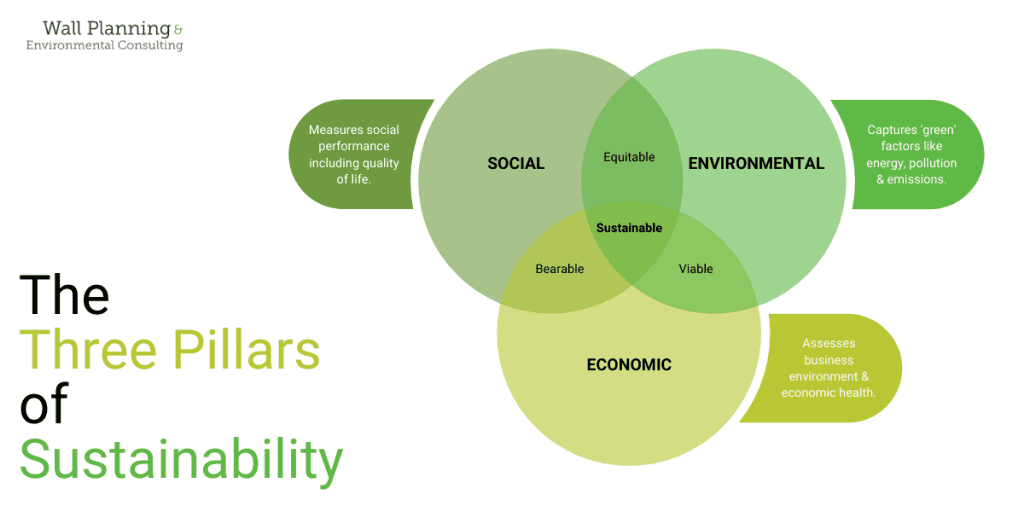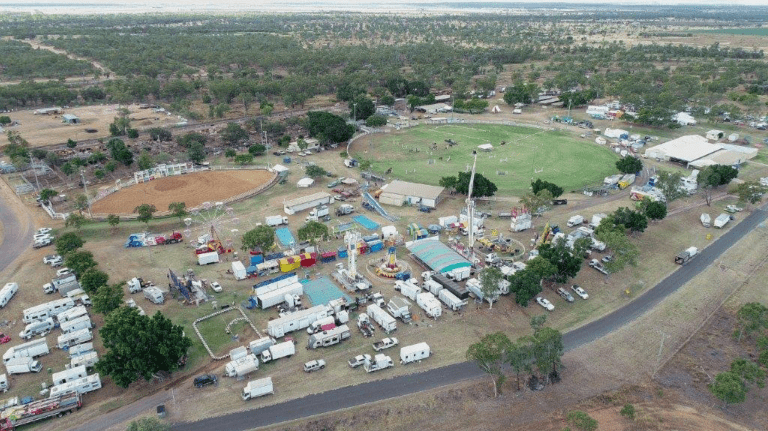The sustainability of a mining community is a critical element within the life of a mine. These communities are less often purpose-built and more commonly pre-existing smaller communities that have the opportunity to flourish with the economic perks of servicing a local mine. Not to mention generating both direct and indirect employment opportunities, including significant royalties for the State.
Forward thinking and planning should become legislative-driven practice in the overall planning of the mine, allowing the host communities to continue to flourish long after the mine has closed.
MINING, SUSTAINABILITY & PLANNING
The employment opportunities and economic activity created by regional mining are beneficial to social sustainability, community well-being and amenity. Additionally, modern mining practice requires a thorough overview of all forecasted and potential environmental impacts, meaning that unforeseen impacts are rarely of major significance and pose very little risk to the local communities.
The major role these operations play in the local and regional economy, combined with the widely understood impacts on the surrounding environment, mean that rehabilitation of the affected communities, economies and environments is to be at the forefront of the sustainable future practice. Best practice mine operations consider social investment, focus on the economic and social returns in the community and on building community resilience.
THE CENTRAL QUEENSLAND CONTEXT
Currently, there are approximately 26 mines in the Central Queensland region in operation, with the Bowen Basin catchment being one of the richest resource extraction areas in the world. These operations have contributed to the local economies of Western and Central Queensland for the past several decades.
Recently, the Queensland Government signed off the mining lease for the Olive Downs Coking Coal Project (Pembroke Resources) on what will become Queensland’s third largest coal mine, located 40km south of Moranbah in the Bowen Basin and will create 1,000 jobs. Further projects are on the cards with the Valeria Mine (Glencore) also in the Bowen Basin and Arrow Energy’s commitment to the first phase of its $10 billion gas project in the Surat Basin.
SOCIAL IMPACT ASSESSMENT (SIA)
SIA is a process for the identification, analysis, assessment, management and monitoring of the social impacts of a proposal both positive and negative. The social impacts of a project are the direct and indirect impacts that affect people and their communities during the stages of the project lifecycle.
Community and stakeholder engagement is a key component of the SIA process and will inform the strategies and recommendations.
MINE CLOSURE
Currently, mine closure practice in the region centres around the rehabilitation of the mine site to something resembling the land prior to the operation. This practice is certainly beneficial, considering the lack of rehabilitation measures undertaken in many mining practices of the past, but mining is also the largest employer of these regional communities.
With labour, machine operation, management, and administration all required on site, large workers’ accommodation facilities are present in many of Central Queensland’s regional towns and centres, their temporary residents spilling the economic benefits of the operation to the surrounding businesses and communities. Investment in local and regional economies in an attempt to gain community support is not uncommon in the closure of mining operations, however a gap in these local economies often remains that can significantly disrupt the livelihoods of these communities.
Mine closures impact much more than the land they operate on, and it is vital to ensure that the livelihoods and functionality of the communities and economies of these regions are preserved through proactive planning practices in the closure of these operations. Fortunately, contemporary mine closure practice seems to be moving in that direction.
THE ROLE OF SLO IN SUSTAINABLE MINING
The key to the overall future sustainability of a mining operation is planning both prior to opening and prior to closure, however the trick is to plan prior . Forward-thinking practice is always necessary to ensure the future of any operation, with mining operations being far from the exception.
Current Australian legislation outlines a requirement for mining operators to plan for the mine rehabilitation measures following the closure of the project. However, it is the role of the practitioner to ensure that the operation provides sufficient means to ensure sustainability for the surrounding communities, economies and environments.
This is usually conducted by the operator for one particular reason; social licence to operate (SLO).
SLO refers to the surrounding community’s support for a large-scale operation, particularly for a resource project. Due to the impact on the social, environmental and economic aspects of affected communities, major mining companies are increasingly concerned with the community support for current and future developments.
Crucial to this support is ensuring effective stakeholder engagement with community groups to outline local concerns and values. These are to be incorporated into the rehabilitation actions undertaken by the operators upon the closure of the mine, addressing the economy, community, and ecology of the region.
Often, mining operators will aim to foster SLO upon the closure of the mine through a number of means, addressing each aforementioned pillar of sustainability. Economic incentives and investment in local and regional infrastructure, funding for community groups ,and environmental rehabilitation generally comprise the extent to which mining operators contribute to the development of this SLO, however regional economies, communities and land can still be left disrupted in the wake of these projects.
It is forward thinking and proactive practices to foster SLO that will create the new standard for regional sustainability, post closure of the operations.
LOOKING BEYOND CLOSURE BEFORE OPENING
To ensure the sustainability of the region following the closure of the mine, proactive and forward-thinking practices must be employed by planners, operators and legislators. Examples of this can be found in mine closure efforts globally, with commonalities between the examples being in the reuse of the site supporting local communities, economies and/or environments.
Ideally, the impact of closure should be planned for as a part of the opening plan for a mine and should include considerable SLO practices in community consultation.
This planning should extend beyond the opening and function of the mine to consider practices and programs that can be set up and used throughout the life of the mine, continuing beyond the mine life, to ensure the economic impact of a mine closure is minimised. SLO in closure is not providing adequate time to plan and implement quality practices that will sustain a community.
THE THREE PILLARS OF SUSTAINABILITY
You’ll likely have heard about ESG (Environment, Social, Governance), but another common model for sustainability is The Three Pillars of Sustainability, which incorporates the need to address three aspects of a mine’s impact: Social, Environmental, Economic. Whilst combination of any two is beneficial, true sustainability of a region relies on a combination of all three pillars.
Thankfully, examples are starting to appear where mines that are thinking outside the box about sustainability programs that enmesh the three pillars.
In an attempt to replace the ecological sustainability of the area, standard practice for mine closure is the rehabilitation of the land into the former natural landscape, however a number of alternate practices have been setting a new precedent for best practice in mine closure.
The Woodcutters mine in the Northern Territory saw the land rehabilitated and turned to the traditional owners of the site, the Kungarrakan and Warai people. Alternately, a growing trend in a number of global closures have seen rehabilitated mining land converted into agricultural operations to generate income and employment for the local economies.
Building regional resilience through early and forward planning and implementation is key to ensuring a mine’s social licence to operate in the area, and the overall sustainability of the mine. It is also only through forward-thinking, innovative practice that the operations can not only attempt to replicate the former ecological value of a site but transform the area post-closure into one of greater economic, community and environmental viability than what was present prior to the operation.
Will the future of mining see an improvement in all three pillars of sustainability? Will renewables set a new standard for the resource sector sustainability? It is the role of the visionary planners to find a wholly sustainable future, and more importantly, a path to get there.




